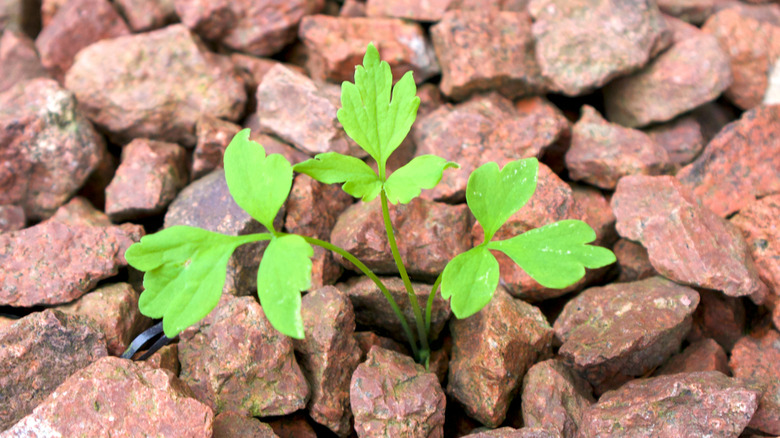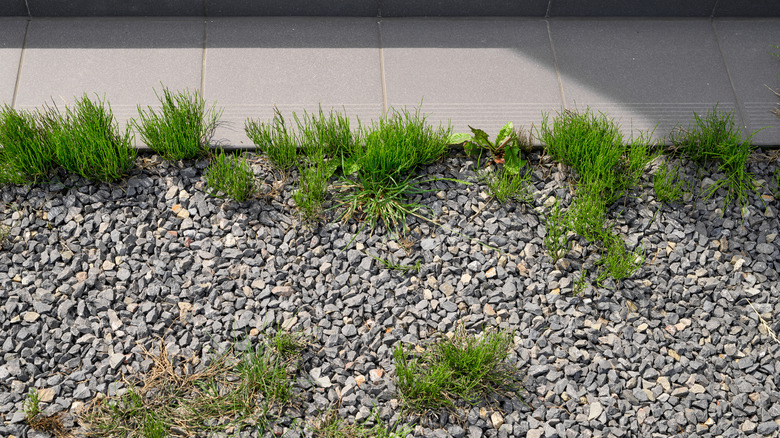Kill Weeds In Gravel & Keep Them From Coming Back With An Easy Homemade Mixture
Gravel walkways, driveways, and patios are practical, beautiful, and durable. They seemingly last forever and need little maintenance with the exception of one recurring problem: weeds. These pesky plants are the persistent pest of pathways and patios and seem determined grow exactly where we don't want them. There are foolproof ways to get rid of weeds growing in your gravel. Commercial herbicides will certainly kill the pesky plants, but many of us are concerned with their potential long-lasting negative effects on the environment. Are there less toxic natural chemicals that will kill weeds and then break down without persistent detriment to the environment? The answer to that question is yes, and you likely have a box of it in your kitchen right now. Baking soda.
Sodium bicarbonate, baking soda's chemical name, is a crystalline salt that does a lot of things: makes biscuits fluffy, will calm an upset stomach, clean your kitchen, and curiously, kill weeds. The way it kills plants (not just weeds) is by desiccating the cells in the plant, removing water that they need to live. If it desiccates the plants right down through their roots, the plant will not regrow. Baking soda is chemically a base, and it is that fact by which it draws the water from the plants. Once it sits in the soil or gravel for a while, the natural acids in the dirt will neutralize the sodium bicarbonate, leaving behind a salt that can be washed out of the gravel. (For example, by a soaking rain.)
How to use baking soda to kill weeds in gravel
Gravel, being rock, does not grow weeds, but after a while, dust and dirt will build up in the gravel and weed seeds will find their way to that matrix. The seeds will sprout and thus begins your problem. How do you kill weeds with baking soda? There are a couple of ways to do it. The easiest is to simply put about a teaspoon of the powder right on the weed. Wet the weed so the baking soda to stick to it. The downside to this method is baking soda is easily blown around by the wind making it less effective. The second is to mix it with water (about 10 tablespoons per gallon), put it in a spray bottle and soak down the weed with the mixture. It won't get blown around and will also likely soak down to the roots, directly harming them. Watch the plants and if they don't completely succumb, repeat the application.
There are a couple of caveats to keep in mind here. Baking soda is indiscriminate and will kill any plant it comes in contact with, not just weeds. So, be careful where you use it. As mentioned, in time and with contact with acids in the soil, sodium bicarbonate will break down to a salt. Too much salt in your soil can be harmful. Flooding the gravel with water will dilute the salt levels and protect plants growing adjacent to your gravel. Finally, will baking soda keep your gravel free of weeds for all time? No. The same process that got weeds growing in your gravel in the first place will repeat itself. But don't fret, the plants you kill should stay dead.

